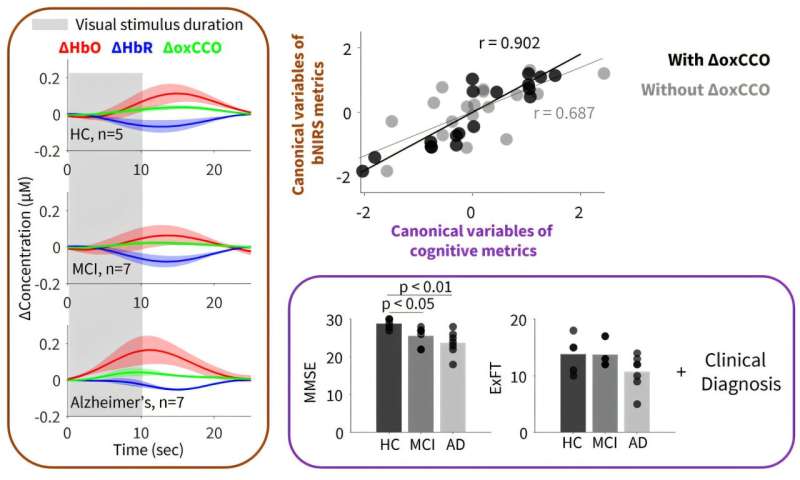A team of researchers in the UK has now demonstrated that a compact, noninvasive technology—broadband near-infrared spectroscopy (bNIRS)—may offer a new way to detect brain changes linked to Alzheimer’s disease, even in the early stages.
In this pilot study reported in the Journal of Biomedical Optics, scientists used bNIRS to monitor both blood oxygenation and brain metabolism in response to visual stimulation.
Unlike conventional near-infrared spectroscopy, which typically tracks only oxygenated and deoxygenated hemoglobin, the broadband approach also measures the oxidation state of cytochrome c oxidase (oxCCO), a key mitochondrial enzyme involved in cellular energy production. Previous work has shown that oxCCO activity is reduced in Alzheimer’s disease, making it a promising biomarker for early detection.

